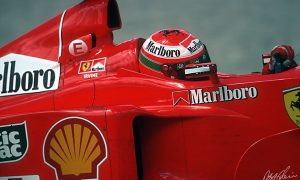
©F1i
FORCE INDIA’S TRADEMARK ‘NOSTRILS’
One of the trademark features on the VJM09 remain its nosecone pierced with two nostrils, which aim at maximising the under-nose airflow.
In order to comply with Article 3.7 of the technical regulations – which basically stipulates that an F1 nose must form a single cross section, without any aperture – the Force India aerodynamicists have created both nostrils in such a way that these do not actually constitute openings
Looking at the design from below, one cannot see through the nostril because there is some overlap in the design. However, when one gradually moves left or right, that’s when one can see through the ducts.
Outperforming the Williams FW38 was no small feat for the Andy Green-designed VJM09 but it did just that to help Force India secure fourth in the 2016 Constructors’ championship with roughly the same budget as its rivals from Grove (believed to be around £109m): a just reward for Force India’s clever use of the Toyota windtunnel in Cologne, Germany and its discreet albeit very strong engineering core.
Under the skin of the McLaren-Honda MP4-31
Under the skin of the Ferrari SF16-H
Under the skin of the Mercedes W07
Under the skin of the Red Bull RB12
Under the skin of the Haas VF-16
Click here for more technical features






